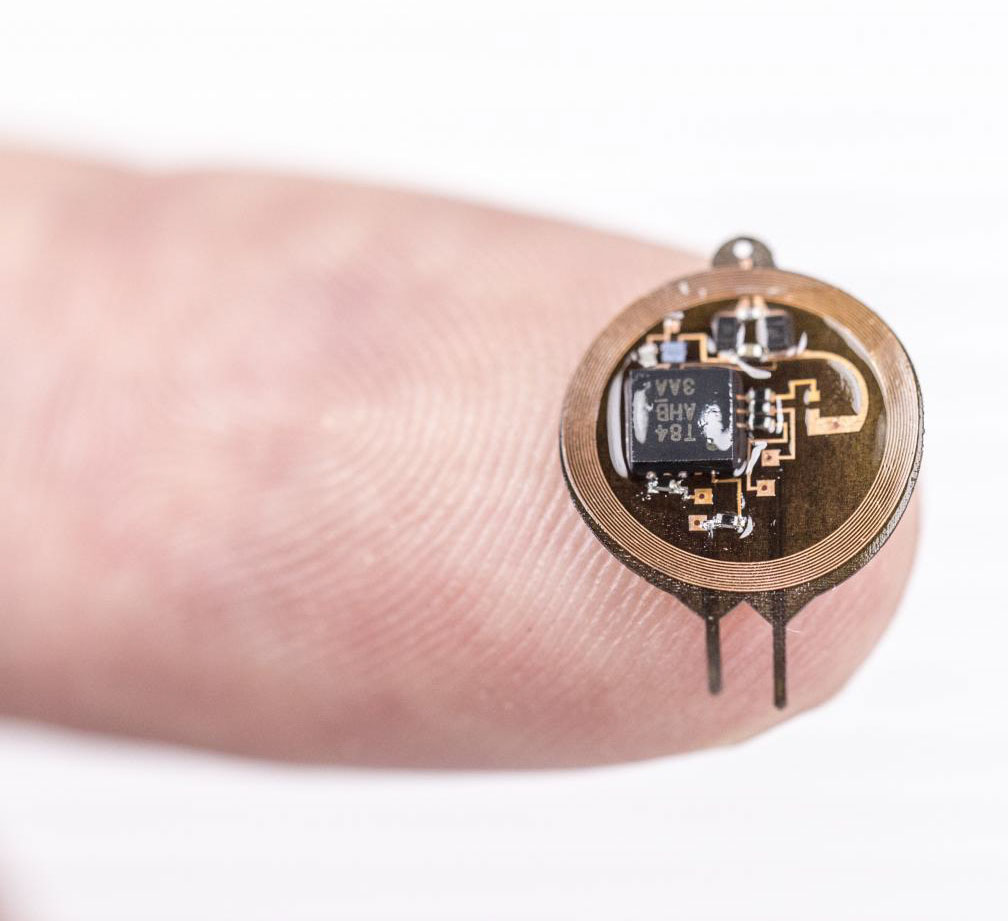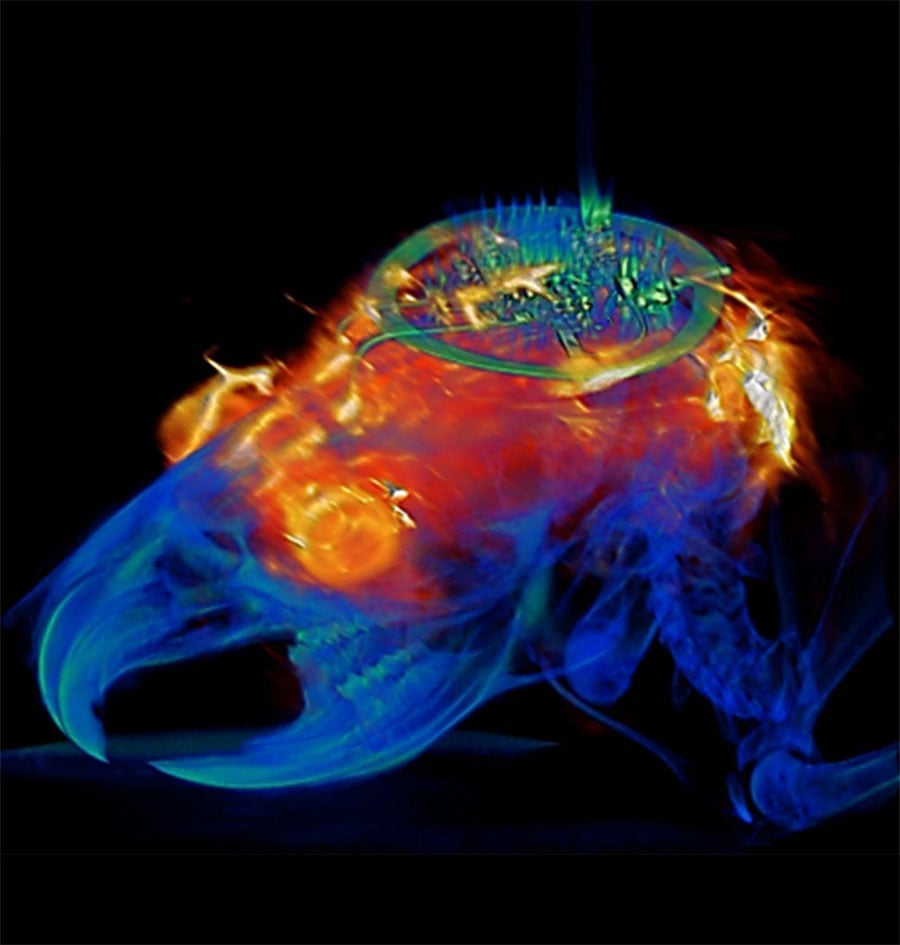A University of Arizona research team has developed a wireless, battery-free method for controlling the intensity and frequency of light that is delivered to neurons in the brain. The miniature device for optogenetics can be fully implanted under the scalp and allows researchers to independently stimulate multiple locations in the brain of the same subject.

Wireless and battery-free implant with advanced control over targeted neuron groups. Courtesy of Philipp Gutruf.
The researchers said that previously developed ultrasmall, implantable devices for optogenetic neuromodulation were passive in their electronic design, precluding any form of active control or programmability. The new device exploits developments in integrated circuit and antenna design to provide position- and angle-independent wireless power harvesting, with full user-programmability over individual or multiple devices. The new implants are powered by external oscillating magnetic fields. They are not significantly larger or heavier than previous, passive systems.
The new antenna design eliminates a problem faced by previous optogenetic devices, where the strength of the signal being transmitted to the device varied depending on the angle of the brain (a subject would turn its head and the signal would weaken). “This system has two antennas in one enclosure,” said professor Philipp Gutruf. “We switch the signal back and forth very rapidly so we can power the implant at any orientation.”
The new device provides digital control over the intensity and frequency of the light being emitted, Gutruf said. This allows the researchers to control exactly how much of the brain the light is affecting — the brighter the light, the farther it will reach. It also allows control over the heat generated by the light sources, so that neurons are not accidentally activated by heat. “We can also independently stimulate multiple places in the brain of the same subject, which also wasn’t possible before,” Gutruf said.

Combined image analysis with MRI and CT results superimposed on a 3D rendering of the animal implanted with the programmable bilateral multi µ-ILED device. Courtesy of Philipp Gutruf.
The researchers demonstrated that animals implanted with these devices could be safely imaged with CT and MRI. The team said that the devices can be implanted via a simple surgical procedure, similar to surgeries in which humans are fitted with neurostimulators, and that the devices cause no adverse effects to subjects, and that their functionality does not degrade over time.
The new device could expand current options for optogenetics researchers in the areas of output stabilization, intensity control, and multimodal operation, with potential applications in neuroscience research and, in particular, the precise dissection of neural circuit function during unconstrained behavioral studies.